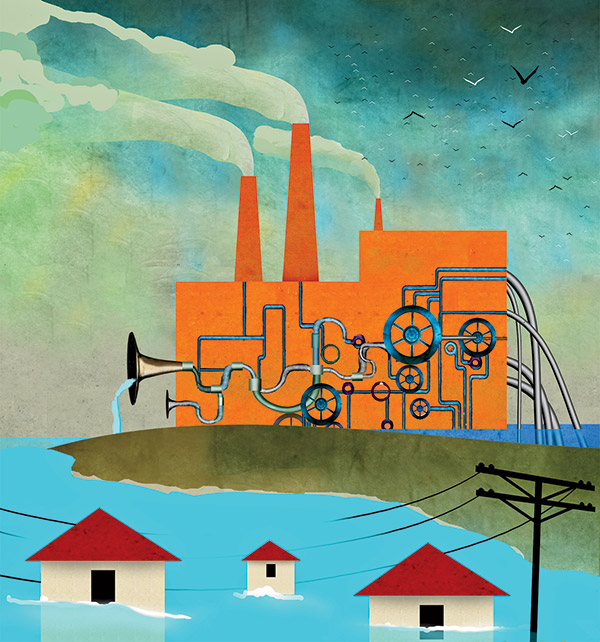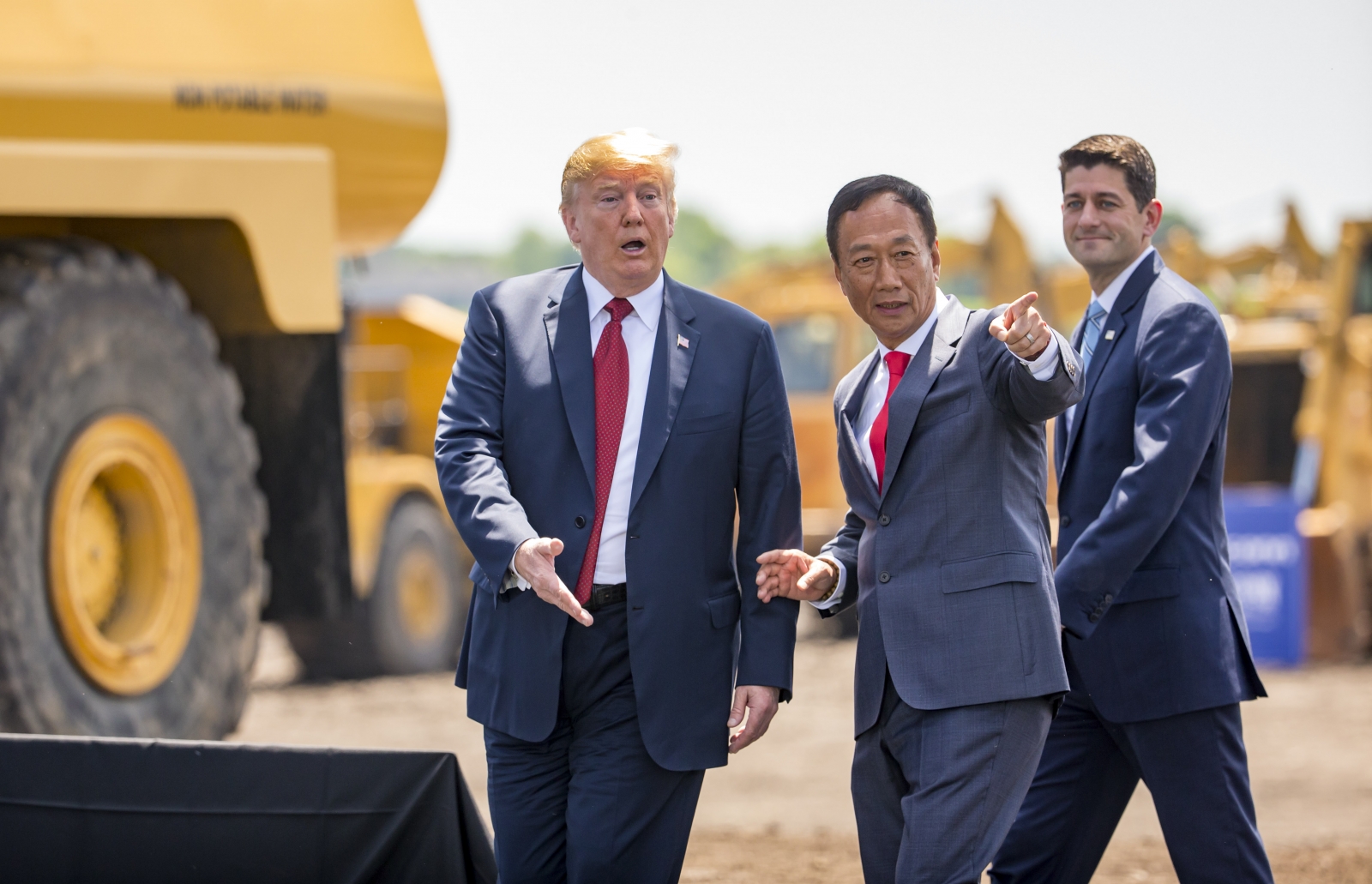
Gurnee Mayor Kristina Kovarik shudders when recalling the fish that lazily swam along her village’s waterlogged streets last year after the Des Plaines River overflowed into its business district. Far northern Lake County — where Gurnee and other suburbs sit within striking distance of both the Des Plaines and Fox Rivers — has for years been fighting flooding that’s caused billions of dollars in damage. In the past six years alone, the county spent nearly $20 million to clean debris and limit damage by buying and demolishing houses and other structures — including a school — within its low-lying floodplain.
“Flooding,” says Kovarik, “is the worst.”
But that work may be for naught because of a new and ominous threat from nearby Racine County, Wisconsin, where a $10 billion, 20 million-square-foot Foxconn Technology Group plant is under construction and scheduled to open in 2020. The high-tech hub will make LCD screens for TVs, computers, and possibly iPhones and create up to 13,000 jobs. But Illinois lawmakers and activists fear the plant will not only worsen the flooding but also threaten the region’s air and water.
Foxconn chose to build on an almost 1,200-acre site near the headwaters of the Des Plaines River that includes wetlands and fields crucial to absorbing excess storm water. With a factory there, water from big rains could instead cascade south. The Lake County Stormwater Management Commission, the Lake County Board, and the Illinois Senate have all passed resolutions blasting Wisconsin for playing fast and loose with environmental standards for the benefit of Foxconn.
“You don’t have to give away the environment to get jobs,” asserts state senator Melinda Bush, who sponsored the Senate resolution and represents the 31st District, which includes Zion, Round Lake, and other far north communities. Senators Dick Durbin and Tammy Duckworth are also urging the Army Corps of Engineers to take a long, hard look at any environmental fallout that the new development could have on Illinois.
But Jim Dick, spokesman for Wisconsin’s Department of Natural Resources, says people can lay off the panic button. “[There’s a] myth going around that Foxconn has been exempted from environmental requirements or oversight,” he says. “The fact is, Foxconn is not exempt from state, federal, or local environmental requirements.”
For one thing, the state doesn’t mandate environmental impact studies, says Dick, citing the Amazon distribution center in Kenosha as another significant project built without one. “Not requiring a [study] is about streamlining the process, not about being lax on environmental regulations,” he wrote in an email. He says research by the Southeastern Wisconsin Regional Planning Commission shows Racine’s storm water safeguards will prevent overflow from rolling into Illinois. Plus, Foxconn is paying $2 million to cover future mitigation projects, such as the addition of new wetlands.
That may be so, but it’s also true that Foxconn has friends in high government places, starting with President Donald Trump and U.S. House speaker Paul Ryan, in whose district the factory resides. Both advocated for the site and took deep public bows when Foxconn opted for it. Governor Scott Walker championed the move too and is touting it in his reelection campaign. All told, Wisconsin’s state and local governments are giving the company more than $4 billion in incentives to build. The Trump administration handed Foxconn a regulatory gift, as well: The Environmental Protection Agency recently exempted the area (and northwest Indiana) from complying with federal limits on lung-damaging smog — even though federal data indicates Racine already has some of the region’s highest concentrations of smog-creating ozone.

Wisconsin and Illinois have for years blamed each other for allowing factories to spew grime that wafts across the border. With Foxconn looming, Illinois residents fear the cross contamination could get even worse. Attorney General Lisa Madigan and Mayor Rahm Emanuel have filed a federal lawsuit challenging the Trump rollback. The Environmental Law & Policy Center and another activist group are also suing in support of tougher requirements.
There also lurks concern that Foxconn could damage Lake Michigan. Manufacturing liquid-crystal displays calls for a continuous use of water to rinse and clean parts — one of the key reasons that Foxconn wanted its factory near an ample freshwater supply. The plant is taking advantage of a technicality in the Great Lakes Compact, a 2008 agreement among eight states determining how that water can be used, that lets communities that straddle the border of the Great Lakes Basin tap into the lake.
But in April, Wisconsin’s DNR approved a plan for the City of Racine to divert an average of seven million gallons of water per day — mostly to serve Foxconn. Opponents argue the water is meant for residential and recreational use, not industrial, and should be kept within the Great Lakes basin. Illinois and Wisconsin advocates, including the Natural Resources Defense Council, have filed an appeal. “It’s a clear violation of the Great Lakes Compact,” says Karen Hobbs, senior policy analyst with the NRDC.
For its part, Foxconn says it plans to limit its take to 2.5 million gallons a day by using a treatment system that will let it reuse water. In an email, Foxconn says, “We have a duty to strive for excellence in social and environmental responsibility in everything we do.”
Rumors are swirling that other industrial players intend to follow the overseas giant to southeastern Wisconsin. And that makes activists increasingly apprehensive about any Foxconn precedents. Says Howard Learner, president and executive director of the ELPC: “Clean air and water shouldn’t be bargained away.”



